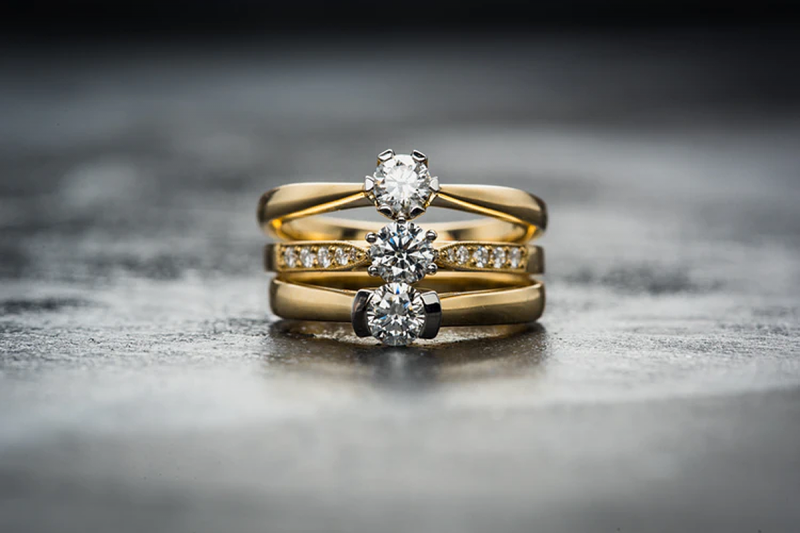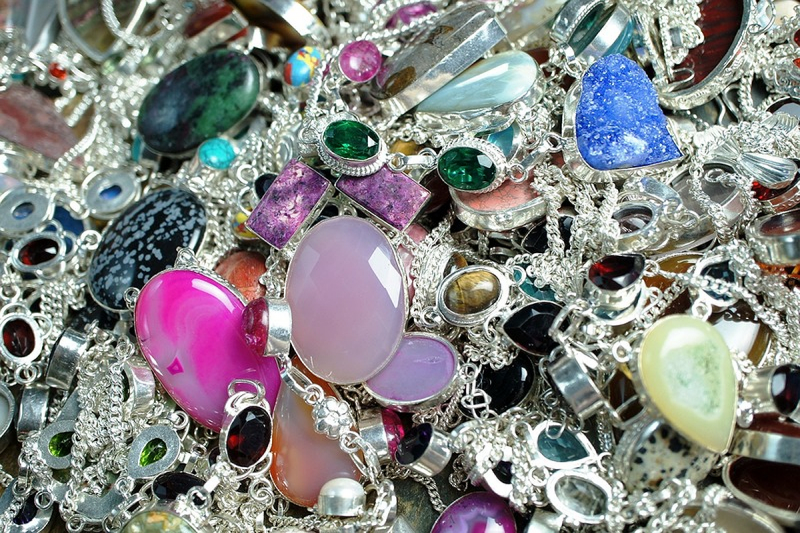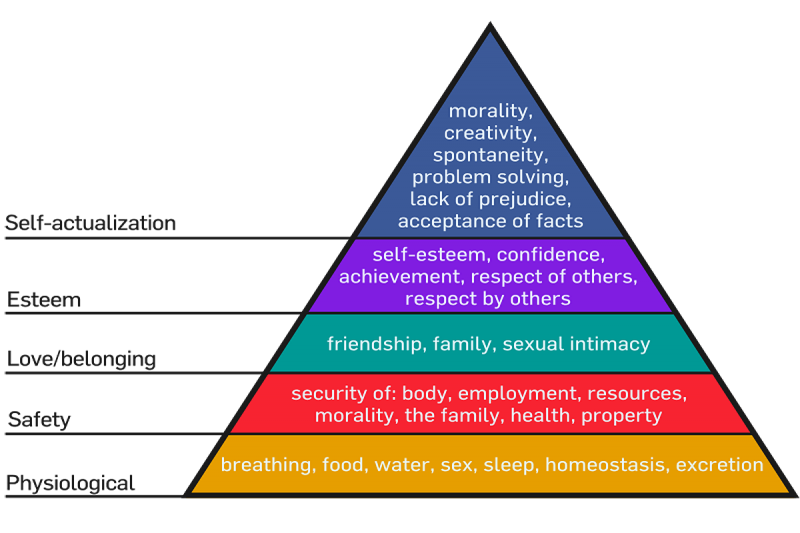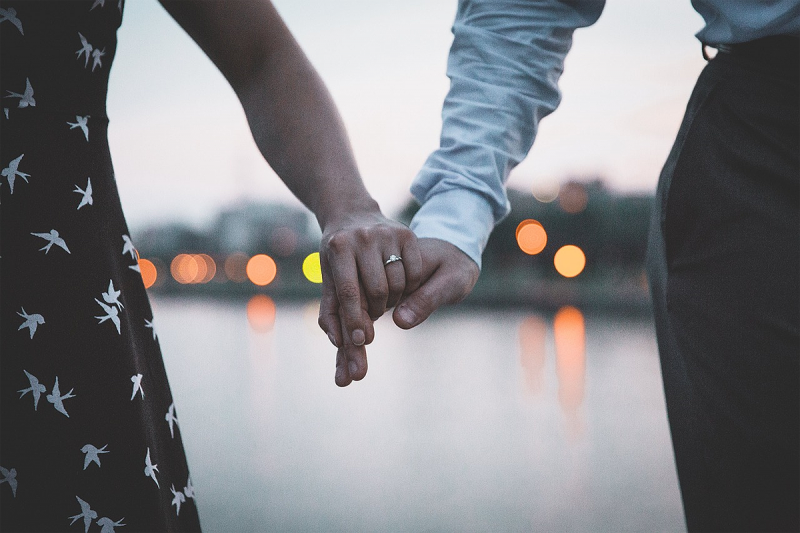It’s a question that some of us might have asked at least once in our lives. Out of curiosity, we wonder why people feel the need to embellish their looks using jewelry. For folks who don’t get the idea of accessorizing, this query comes more from a place of opposition rather than interest. And it is completely understandable for them to feel that way.
Some individuals consider jewelry as a superficial investment because owning them, particularly the ones made from in-demand materials, usually come with hefty price tags. People would rather spend their hard-earned money on necessities, so why buy something they can go without? Some don’t wear jewelry because they are allergic to them, while others simply avoid them because it interferes with their work or physical activities.

In short, there are many reasons why someone might shun wearing jewelry, and it mostly boils down to matters of personal preference. However, there are many people on the opposite end of the spectrum–those who believe that jewelry is something everyone must own. For these individuals, putting on earrings, rings, or necklaces has become part of their routines. It’s something that they simply do before they step out of their houses and go about their day. But where did it all start, and why is it important?
Why do People Like to Wear Jewelry?
To answer this, let us first take a look at the practices of ancient cultures. Even before precious metals were discovered, prehistoric humans came up with the idea of decorating their bodies using a variety of objects. People who settled along the seashore wore ornaments made of shells, fish teeth, fishbones, and colored pebbles. Those who lived inland sourced their adornment materials from the corpses of the animals they had killed for food: mammoth tusks, reindeer antlers, and different kinds of animal bones. Accessorizing with animal parts also served as a way for hunters to showcase their bravery and prowess, which, in turn, helped them earn their community’s respect and admiration. Even then, people like to use jewelry as tangible proof of accomplishing an honorable deed.
The importance of jewelry is determined by its material. Ancient pharaohs believed that some stones possessed supernatural powers that heal illnesses and ward off harmful spirits that bring bad luck. Back then, amulets with magical gemstones were regarded as sacred and held their place as culturally and spiritually significant items for the ancient Egyptians.
Even in modern times, we carry these beliefs by wearing an assortment of crystals not only for the aesthetic benefits they provide but also for the supernatural qualities that they possess. To some, wearing jewelry made of stones and crystals reassures them that certain aspects of their life will prosper, may it be in the areas of health, love, or business. Placing crystals on the body has also been thought to promote physical, emotional, and spiritual healing, according to a report by Time.

An article from Daya Jewelry has revealed that for centuries, jewelry was often worn as a status symbol by pharaohs, kings, emperors, and tsars alike. Ever since precious stones and metals were first discovered, mined, and cultivated into beautiful gems, these delicately-crafted materials have always been coveted possessions. These ornaments eventually became not just a way of beautifying oneself, but also for displaying the wealth and importance of the wearer.
Although it wasn’t called “jewelry” back then, the way we wear embellishments and the materials we use to make them have evolved, but the practice has stuck to the same concept. While the earliest existence of jewelry dates back to around 75,000 years ago, its significance in society back then and now has remained essentially the same.
Historically, people wore jewelry to signify wealth or to protect themselves from unwanted forces that abound. Now, most of us use jewelry for a simple reason – we like how they look. People are all about adorning themselves with accessories that make them feel more presentable, and some find that wearing jewelry does the job of amplifying their looks well. If you’re wearing a plain outfit, even a simple necklace and matching bracelet can give your overall look that extra oomph. Jewelry has also become a way for others to express themselves and make a statement.
Why is Jewelry Important?
The answer may be found in Abraham Maslow’s ‘Hierarchy of Needs.’ During the 1940s, the American psychologist created a five-tier model of needs that must be met for humans to live satisfying lives: physiological, safety, love/belonging, esteem, and self-actualization. If viewed from Maslow’s lens, the act of wearing jewelry ranks among humanity’s highest needs, as you’ll see below.

For instance, jewelry fulfills our want for love through the act of receiving gifts from the people special to us, be it in the form of rings, bracelets, or pendants. People enjoy wearing them not because of their look per se, but more for the connotations that are attached to them.
Seeing our friendship bracelet may remind us of that one college friend. We might haven’t seen that person for quite some time, but seeing a gift from them elicits feelings of longing on our part. Feeling a bit sentimental, we grab our phone and call them up to see how they’ve been doing. A gift reminds us of the giver, and when we have jewelry given to us by someone special, we think of that person every time we wear it or even see it among our things.
The mere sight of those precious items transports us to the time when we first received them, what was said, and, most especially, how we felt at the time. Emotions overwhelm us, and the events of the day play back in our memory like a movie. The jewelry itself doesn’t replace the love, of course, but it is a strong, physical reminder of the connection we’ve established with its giver.

When men propose to their girlfriends, they pop the question with a diamond ring at hand. For a woman, this piece of jewelry signifies certainty. It represents a man’s commitment to love and cherish her—and only her—for the rest of his life.
Jewelry, like the pledge pins used by sororities and fraternities, is also used to indicate affiliation with a specific group, providing the owner with a sense of belongingness. It reassures the wearer that he has a reliable support system and a group of people he can count on when the need arises.
It can also signify a milestone, like the traditional class ring. In the United States, students and alumni wear class rings to commemorate their graduation, typically for a high school or college/university. Aside from being a reminder of achievement, the class ring symbolizes our connection to our schoolmates and alma mater.
When people celebrate accomplishments like graduations or job promotions, they like to reward themselves by acquiring material things. One of the most common ways they do so is by getting themselves fine jewelry. Gifting yourself with jewelry is considered a form of self-actualization, a reminder that you have realized your goals and reached your full potential.
How Does Jewelry Make You Feel?
Based on the examples above, jewelry can generally give its wearer a pleasant feeling, because it is often given and worn for good reasons. For most women who are tired of their looks, wearing beautiful pieces of jewelry helps them feel renewed and desirable. Incorporating accessories in their outfit can enhance their appearance and make them feel pretty again.
When a woman knows that she looks good, she feels good, and knowing this can give her the extra boost that she needs to go on with her day. Having that confidence lift can help anyone reconnect with their inner strength, and sometimes, the only way a woman can unleash that is to feel good about herself. Adding the right bling can make any woman feel sexy and beautiful; they just have to know what suits them best.
Why is Jewelry Important in Fashion?
We all know that fashion trends come and go, but throughout all the shifts in what’s in and what’s out, jewelry has remained a constant element that adapts to the times’ ever-changing styles.
During the 1980s, everything was large and bold. From hairstyles to shoulder pads, fashion during this era was all about eye-catching accessories. The accompanying jewelry must be bright and distinctive to match the daring styles of the times. The ’80s saw the advent of large beaded necklaces, oversized hoop earrings, colorful jelly bracelets, cocktail rings, and big brooches. During these years, people were exploring their individuality. With that, jewelry became more than just an accessory; it became a means of making a statement. The most famous fashion icons of the era were Princess Diana, Cyndi Lauper, and Madonna, according to an article by Glamour Magazine.
The ’90s is remembered as an exciting time in fashion. During the first half of the decade, the neon and oversized accessories trend from the 80s dominated the scene. But ’90s fashion slowly established its identity with the emergence of puka shells that gave that islandy feel, mood rings that change color, choker necklaces, jewelry with ‘healing’ crystals, friendship bracelets, and toe rings that were as essential as sunscreen when people were hitting the beach. The ’90s were surely a fun period in fashion.
As clothing styles change, so do jewelry choices, and that is exactly what makes them a crucial component of fashion.
The Jewelry Industry
Consumer appetite for jewelry has only increased over the years. In 2018, the global jewelry market size was valued at $278.5 billion, according to data from Grand View Research, and it is expected to grow significantly over the forecast period.
The US jewelry market is seen to reach $480.5 billion by 2025.
The demand for jewelry will be driven by increasing disposable income, the introduction of new jewelry designs, and emerging fashion trends. These factors are attracting more customers to invest in jewelry. Moreover, changing lifestyles, the perception of jewelry as a status symbol, and the growing acceptance of ornamentation among men, are among some of the factors that will further propel the growth of this industry.
Furthermore, the market is expected to witness significant growth online as companies increase their ecommerce efforts by announcing product launches, sales, and other relevant information over the internet. We are in the digital age, and businesses know that the best way for them to advertise their products is to utilize the power of the web.
So, why wear jewelry? Jewelry is not just a shallow, frivolous thing, but a piece of item that plays significant roles in people’s lives. It is an inanimate storyteller, a representation of love, a reminder of great life achievements, and a means to express oneself in a way that words can’t.

